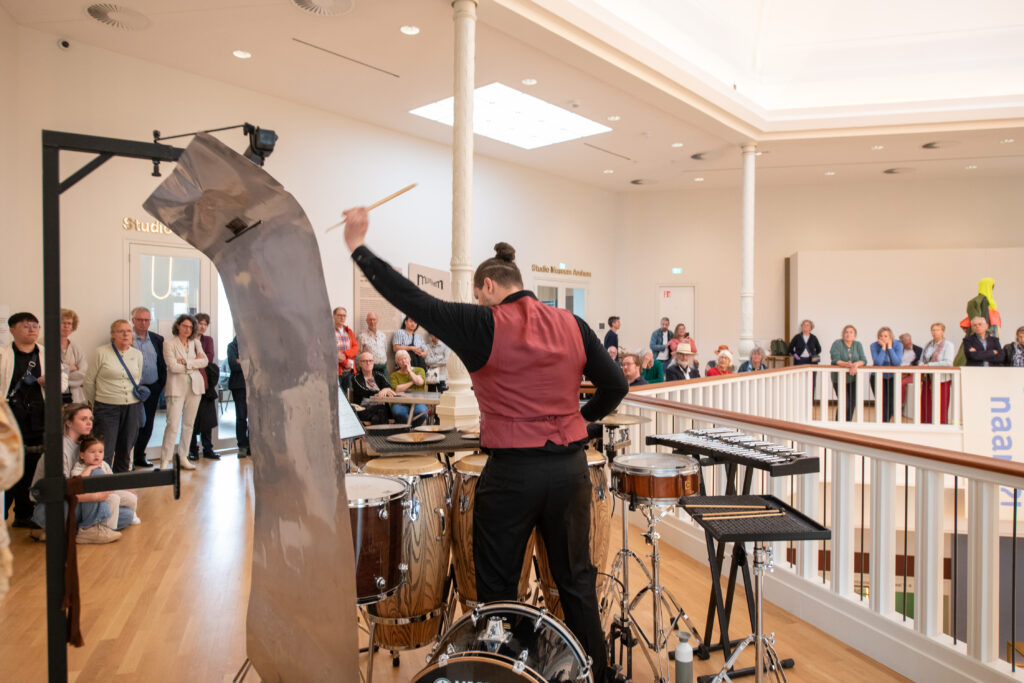
(foto: Maarten Sprangh)
In theaters, summer begins early. Regular programming has to make way for festivals. They erupt in full force in June. I’m a fan of some festivals—media art festivals, theater festivals, and music festivals—though I usually skip the big pop and choir festivals. Still, over time, something has changed. My interest in the Holland Festival and Oerol has declined—two festivals that are difficult to combine—and when it comes to media art festivals, you always have to stay alert: one moment they’re there, the next they’re already gone.
Where I used to mainly wonder: “Why all these media art festivals, why so many, and for so long in the Netherlands?”, now I mostly ask: “For whom?” I’ve left that first question behind after answering it—at least in my view—extensively enough in A Critical History of Media Art in the Netherlands, subtitled Platforms (including festivals), Policies, Technologies, published in 2019. Festivals were important for artists because they provided access to international networks and served as a platform for experimentation. More than any other platform, the media art festival was and is flexible. They also offer the opportunity to bring audiences into contact with new art forms and allowed them to experience firsthand what is happening in the field. Beyond entertainment, they offered—and still offer—knowledge transfer. They create space for innovation and play with expectations. However, what they offer the audience is not automatically what the audience is looking for. And didn’t they lose some of those features along the way?
When I think back to Oerol, it is still the festival par excellence for me, because of the extraordinary experience of being on an island, in nature, guided to carefully selected locations far beyond traditional theater and concert halls—by daylight cycling to a dune hollow, by night, sometimes soaking wet, returning to the sleeping place, as one of many little firelights.
As said I now ask myself “for whom?”, again this year after attending the Andriessen Festival on June 7th —probably for the fifth time. The venue: Musis Sacrum in Arnhem. In earlier years, it often took place in the City Hall where the crowd was more mixed. The festival has a threefold mission: to keep Louis Andriessen’s legacy alive, to give young composers the opportunity to have their work performed, and to seek connections with other art forms. The fitting audience for this is made up of enthusiasts of Andriessen and of contemporary classical music in general. As always and elsewhere the audience here is small and on this occasion of an older generation, much older than the creators and, in many cases, the performers as well. The location seems to matter. Is that a problem? Yes it is! Not only because the festival atmosphere truly comes alive only when there are many people, but even more so because a festival like this—just like media art festivals—is meant to serve as a platform: a place for exchange between different parties, including the peers of the young composers and program makers. It must offer something fundamentally different from a regular concert evening or a doubling thereof as was the case in Arnhem.
What did the people that stayed at home miss? Certainly musical quality: stunning compositions performed by top musicians. Konstantyn Napolov played, among others, Andriessen’s Woodpecker and Christiaan Richter’s Droplets II, Goska Isphording Hugo Morales’ Alpha 2.0, one of the premieres. Under the title The Tale of Two Continents alumni of the Young Composers Meeting featured six new compositions based on the poetry of Sitor Situmorang, once again with outstanding soloists followed by three compositions by ArtEZ students and a laureate of the YCM, and the orchestral suite Rosa’s Horses, an arrangement by Clark Rundell of Andriessen’s Rosa, a Horse Drama, and concluding the evening: a large selection of piano works by Meredith Monk performed by the Di Gennaro – Moneti duo. Hopefully the bell will ring again next year, and early enough, so that everyone can prepare in time for the wonderful sounds of this little festival.